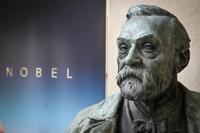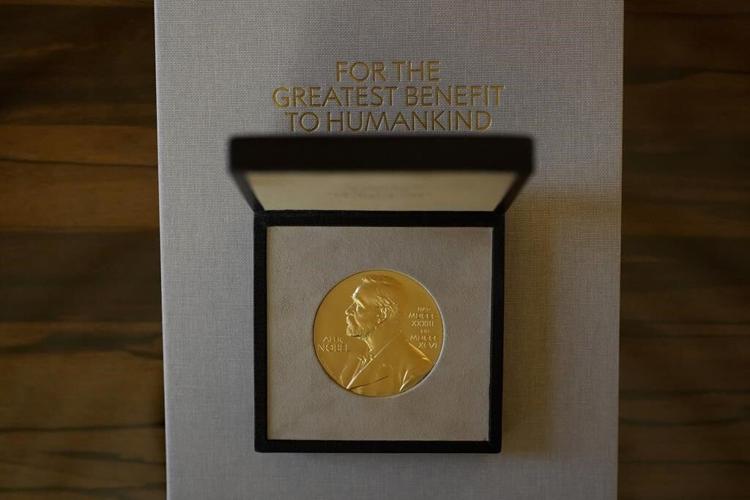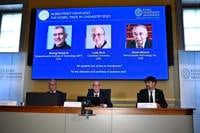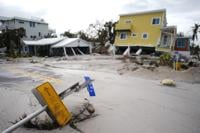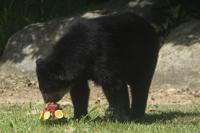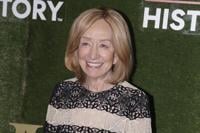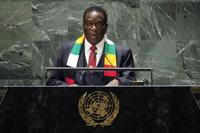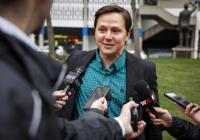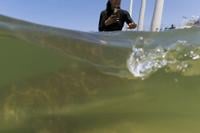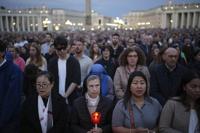STOCKHOLM (AP) — Three scientists won the Nobel Prize in chemistry Wednesday for their work on quantum dots — tiny particles just a few nanometers in diameter that can release very bright colored light and whose applications in everyday life include electronics and medical imaging.
Moungi Bawendi of MIT, Louis Brus of Columbia University, and Alexei Ekimov of Nanocrystals Technology Inc., were honored for their work with the tiny particles that “have unique properties and now spread their light from television screens and LED lamps,” according to the Royal Swedish Academy of Sciences, which announced the award in Stockholm.
The suspense surrounding the academy's decision took an The advance notice apparently came from a news release sent out early by mistake.
WHAT DISCOVERY WON THE NOBEL PRIZE IN CHEMISTRY?
Quantum dots are tiny inorganic particles that glow a range of colors from red to blue when exposed to light. The color they emit depends upon the size of the particle.
Scientists can engineer the dots from materials that include gold, graphene and cadmium, and create their color by controlling their size. The tiniest particles, in which electrons are most tightly confined, emit blue light. Slightly larger particles, in which electrons bounce around a longer wavelength, emit red light.
Chemists sometimes compare the size of the particle itself to a confining box.
The underlying “particle in a box” theory of quantum mechanics was first described nearly a century ago. But it wasn’t until several decades later that scientists could manufacture quantum dots in a lab.
In the 1980s, Ekimov, 78, and Brus, 80, honed the theory and developed early laboratory techniques for creating particles that emit varying colors by adjusting sizes. In 1993, Bawendi, 62, developed new chemical methods for producing the particles quickly and uniformly — which soon enabled a variety of scalable commercial applications, including in electronics displays.
Judy Giordan, president of the American Chemical Society, said she was thrilled at this year's winners.
“What we care about a lot in chemistry is being able to make and tailor novel structures and architectures to solve problems that help people and the planet,” Giordan said.
Rigoberto Advincula, a materials chemist at Oak Ridge ��ɫtv Laboratory in Tennessee, said the work helped bridge the fields of physics and chemistry, adding: “This technology is very easy to reproduce — that's why it became so popular and so widespread."
Today quantum dots are commonly used in electronics displays and biomedical imaging. The florescent quality of the particles allows researchers to track how drugs are delivered within the human body, as well as to study the precise location and growth of a tumor, for example.
WERE THE WINNERS ANNOUNCED PREMATURELY?
Swedish media reported hours before Wednesday's announcement that the Royal Swedish Academy of Sciences had sent out a news release that identified Bawendi, Brus and Ekimov as the latest Nobel laureates.
Public broadcaster SVT said the release said they were receiving the prize for the “discovery and synthesis of quantum dots.”
After officially announcing the three winners, Secretary-General Hans Ellegren said the Swedish academy would investigate how the information got out in advance.
“There was a press release sent out for still unknown reasons. We have been very active this morning to find out exactly what happened,” he said. “This is very unfortunate and we deeply regret what happened.”
The academy, which awards the physics, chemistry and economics prizes, asks for nominations a year in advance from thousands of university professors and other scholars around the world.
A committee for each prize then discusses candidates in a series of meetings before presenting one or more proposals to the full academy for a vote. The deliberations, including the names of nominees other than the winners, are kept confidential for 50 years.
HOW DID THE WINNERS REACT?
Bawendi told a news conference he was “very surprised, sleepy, shocked, unexpected and very honored.”
Asked about the leak, he said he didn’t know he'd been made a Nobel laureate until he was called by the academy.
Bawendi said he was not thinking about the possible applications of his work when he started researching quantum dots.
“The motivation really is the basic science. A basic understanding, the curiosity of how does the world work? And that’s what drives scientists and academic scientists to do what they do,” he said.
Brus, a professor emeritus at Columbia, said he didn’t pick up the phone when the early morning call came from the Swedish academy to notify him.
“It was ringing during the night, but I didn’t answer it because I’m trying to get some sleep, basically,” he told The Associated Press. He finally saw the news online when he got up around 6 a.m.
“I certainly was not expecting this,” Brus said.
Brus said he was glad to see recognition for the area of chemistry he practices. The practical applications of quantum dots, like creating the colors in flat-screen TVs, are something he was hoping for when he started the work decades ago, he said.
“Basic research is extremely hard to predict exactly how it’s going to work out,” Brus said. “It’s more for the knowledge base than it is for the actual materials. But in this case, it’s both.”
Ekimov agreed, crediting the scientific curiosity that was instilled in him as a student and researcher in the Soviet Union in the 1980s for some of his success.
“Back then, it was a career based on curiosity, not for making money or anything else,” said Ekimov, the former chief scientist at New York-based Nanocrystals Technology, where he began working in 1999 after immigrating to the U.S.
On Tuesday, the physics prize went to French-Swedish physicist Anne L’Huillier, French scientist Pierre Agostini and Hungarian-born Ferenc Krausz for producing the first split-second glimpse into the super-fast world of .
On Monday, Hungarian-American Katalin Karikó and American Drew Weissman won the for discoveries that enabled the creation of mRNA vaccines against COVID-19.
The prizes in literature, peace and economics follow, with one announcement every weekday until Monday.
The Nobel Prizes carry of 11 million Swedish kronor ($1 million) from a bequest left by the prize’s creator, Swedish inventor Alfred Nobel.
___
Larson reported from Washington. Ngowi reported from Cambridge, Massachusetts. Mike Corder in The Hague, Netherlands; Maddie Burakoff and Shelby Lum in New York, and Daniel Kozin in Fort Lauderdale, Florida, contributed.
___
Follow all AP stories about the Nobel Prizes at


